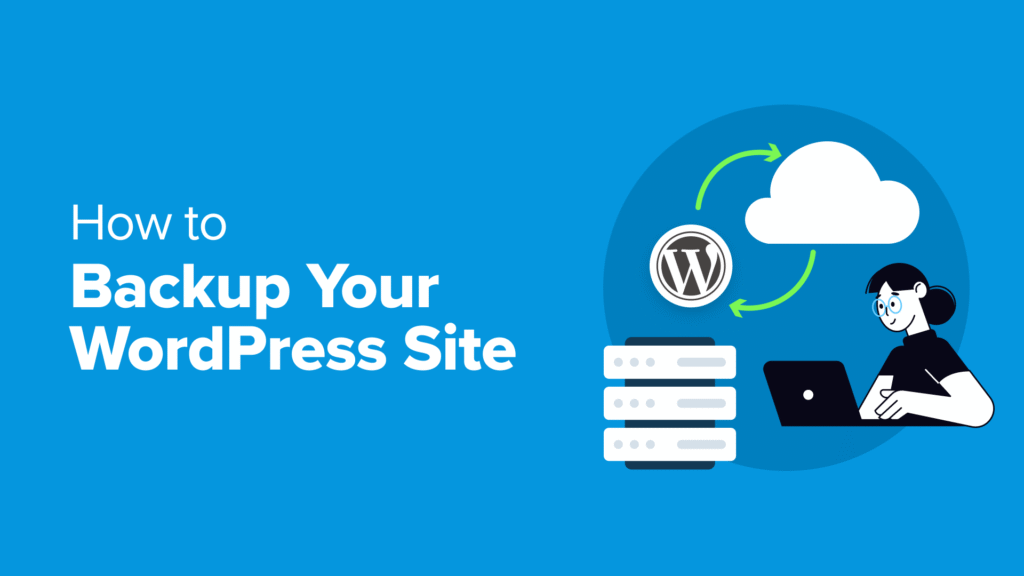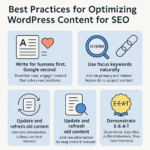Certainly! Here’s a complete, SEO-optimized, beginner-friendly guide for your blog or service page titled:
💾 How Do I Back Up My WordPress Site? (Beginner’s Step-by-Step Guide)
Imagine losing your website overnight due to a hack, crash, or hosting issue 😨 — it happens more often than you think. That’s why regular WordPress backups are a must!
In this guide, you’ll learn how to back up your WordPress site safely and automatically, using both plugins and manual methods.
✅ Why Backups Are Essential for WordPress
- 🔄 Restore your site after crashes, malware, or bad updates
- 🔒 Protect against hacking or accidental deletion
- 💼 Peace of mind for business websites and blogs
- 🛠️ Easy to move your site to new hosting or domain
🧰 What Does a WordPress Backup Include?
A full WordPress backup should cover:
- 📁 All website files (themes, plugins, media)
- 🧠 Your database (posts, pages, users, settings)
🔌 Method 1: Use a WordPress Backup Plugin (Recommended)
The easiest and safest way for beginners!
🔹 Popular Backup Plugins:
- UpdraftPlus (Free & Premium)
- All-in-One WP Migration
- Jetpack Backup
- BackupBuddy
- BlogVault
🛠️ How to Back Up with UpdraftPlus
- Go to: Dashboard → Plugins → Add New
- Search UpdraftPlus, install & activate
- Go to: Settings → UpdraftPlus Backups
📸 Image Tip: Show UpdraftPlus dashboard with Backup Now button
- Click Backup Now
- Choose what to include: Files, Database (select both)
- Hit Backup Now again
🎉 Done! The backup will be stored locally.
🔄 How to Set Automatic Backups
In UpdraftPlus:
- Go to Settings tab
- Set backup schedule: e.g., Daily backups + 7-day retention
- Choose remote storage: Dropbox, Google Drive, Amazon S3, etc.
📸 Image Tip: Show the remote storage setup screen
💻 Method 2: Manual WordPress Backup (Advanced)
Useful if you want direct control or don’t use plugins.
📁 Step 1: Backup Website Files
Use FTP (FileZilla) or your hosting File Manager:
- Connect to your site via FTP
- Download everything inside
/public_html/or/www/
This includes:
- wp-content folder (themes, plugins, uploads)
- wp-config.php
- .htaccess
🧠 Step 2: Backup WordPress Database
Use phpMyAdmin (provided by your host):
- Login to cPanel → Open phpMyAdmin
- Select your site’s database
- Click Export → Choose Quick + SQL format
- Click Go to download your
.sqlfile
📸 Image Tip: Show phpMyAdmin export screen
💾 Store both the files + .sql in a safe folder or cloud drive.
🧩 Bonus Tip: Restore From Backup
Most plugins like UpdraftPlus and All-in-One WP Migration allow easy restoration:
- Go to the plugin dashboard
- Click Restore → Select files/database
- Follow the prompt — your site will be restored in minutes!
🚫 Common Backup Mistakes to Avoid
❌ No scheduled backups
❌ Saving backups only on the same server
❌ Not testing backups
❌ Backing up only files, not database
❌ Forgetting to secure backup folders (they should be private!)
📦 Pro Tip: Use Cloud Storage
Backups should be stored off-site (not just your web hosting):
- ☁️ Google Drive
- ☁️ Dropbox
- ☁️ OneDrive
- ☁️ Amazon S3
This ensures safety even if your server crashes or is compromised.
🙌 Final Thoughts
Backing up your WordPress site isn’t optional — it’s essential. With tools like UpdraftPlus, you can schedule automatic backups and restore anytime, worry-free.
Whether you’re a blogger, eCommerce store, or small business owner, make backups a habit before updates, migrations, or major changes.
📞 Need Help Backing Up or Restoring Your WordPress Site?
👉 Let us handle it for you — fast, secure, and affordable.
📲 Call/WhatsApp: +91-9818039953
🌐 Website: www.WordPressFreelancer.in
📍 Serving: Noida, Delhi NCR, Gurgaon & Pan India
🔍 Suggested SEO Keywords:
how to back up WordPress site, WordPress backup plugin, best way to back up WordPress, restore WordPress from backup, updraftplus guide, manual WordPress backup, website backup service India



